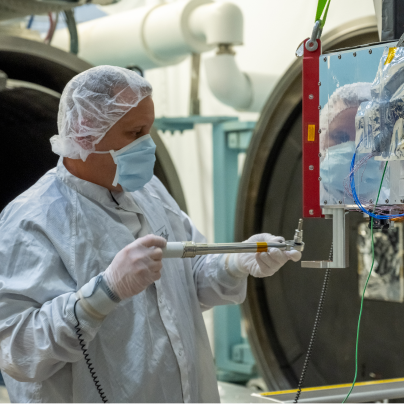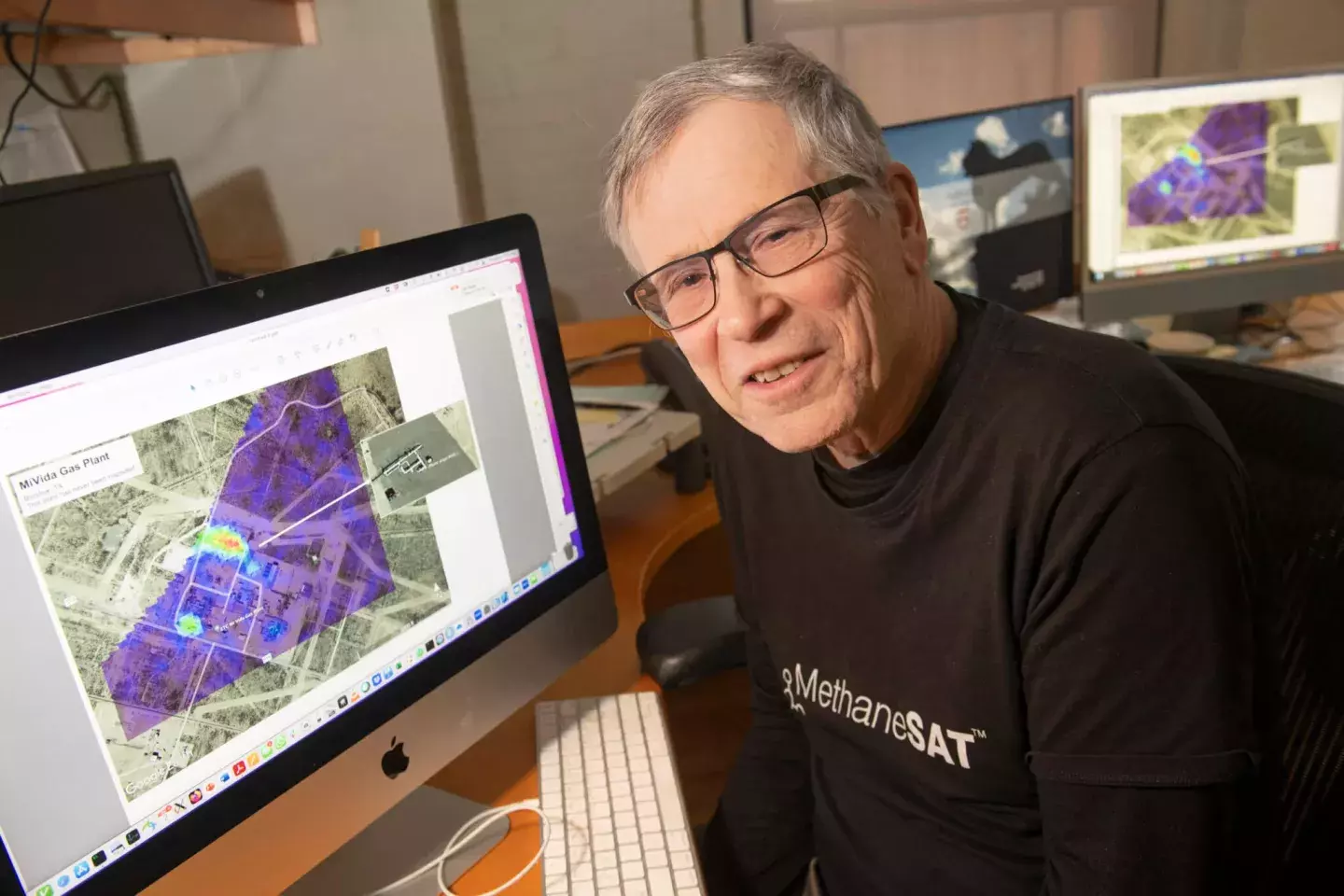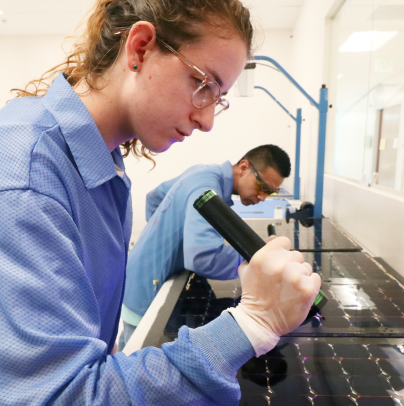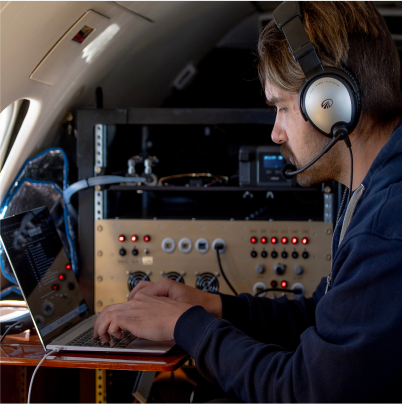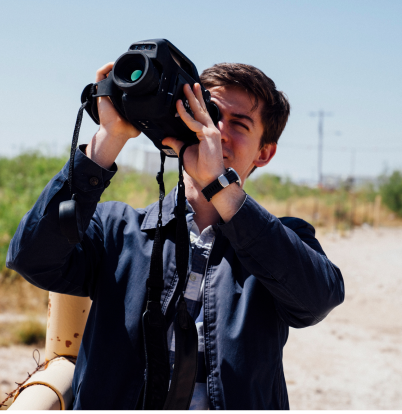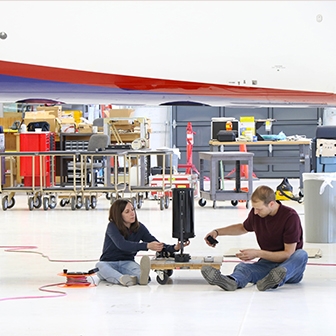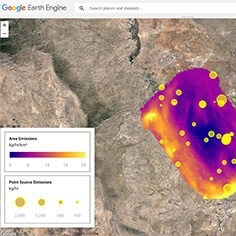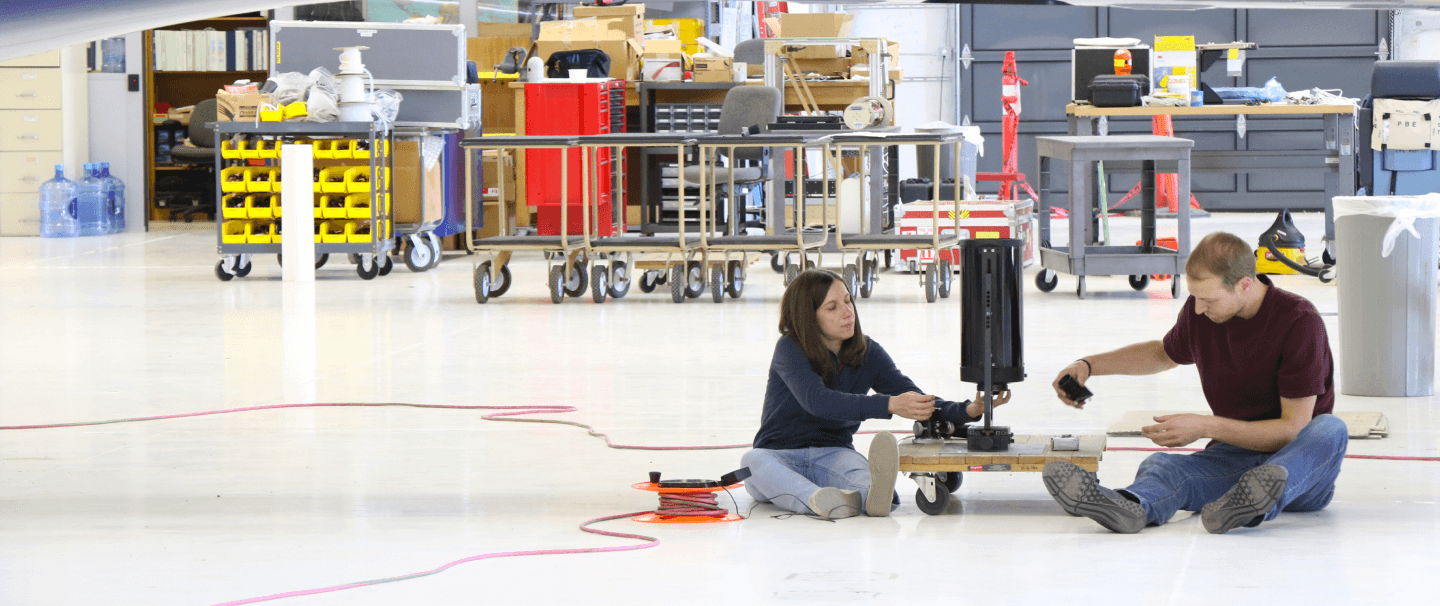
Our Team
We have experts from leading institutions worldwide working together to ensure the mission's success.
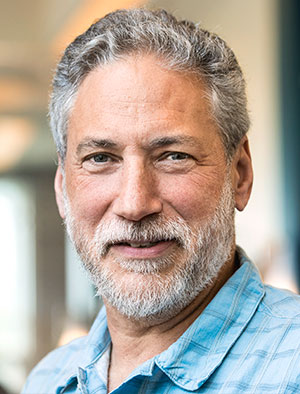
Steve is the project lead of MethaneSAT and, in a separate capacity, Chief Scientist at Environmental Defense Fund, where he initiated and oversaw an unprecedented initiative involving over 150 scientists from more than 40 institutions measuring methane leakage across the U.S. natural gas supply chain. Steven serves as Chief Scientific Officer for the United Nations Environment Programme’s Global methane studies, a join effort of UNEP, EDF, DG Energy (European Commission) and the Oil and Gas Climate Initiative companies. He was previously on the faculty of Brown University for 16 years. He has published more than 100 scientific papers and served as a lead author for the Intergovernmental Panel on Climate Change.

Ed served over three decades at Lockheed Martin, including significant management roles on multiple remote sensing satellite system programs. Since 2016, he has operated as a consultant to a number of commercial startup companies. Ed is now providing satellite program management services for the MethaneSAT program. He has extensive systems engineering and management experience in earth observation and telecommunication satellite system developments and operations.
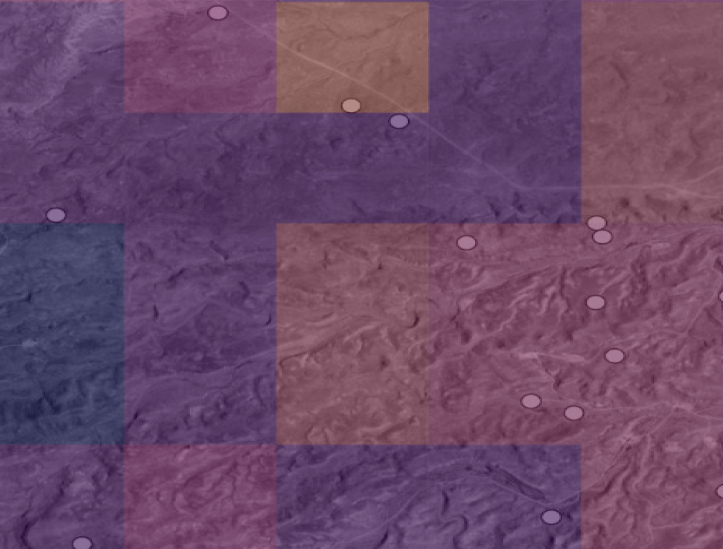
Bobby has over 25 years’ experience in the space industry in various leadership/operations roles, participating in the launch, commissioning, and operation of over 80 spacecraft. During his Air Force career, he served as a member of the organization that completed full operational capability of the Global Positioning System (GPS) constellation. In the commercial sector, he has worked in mission operations and develop for the Iridium constellation, GeoEye high resolution imaging satellites, and imaging systems on-board the International Space Station.
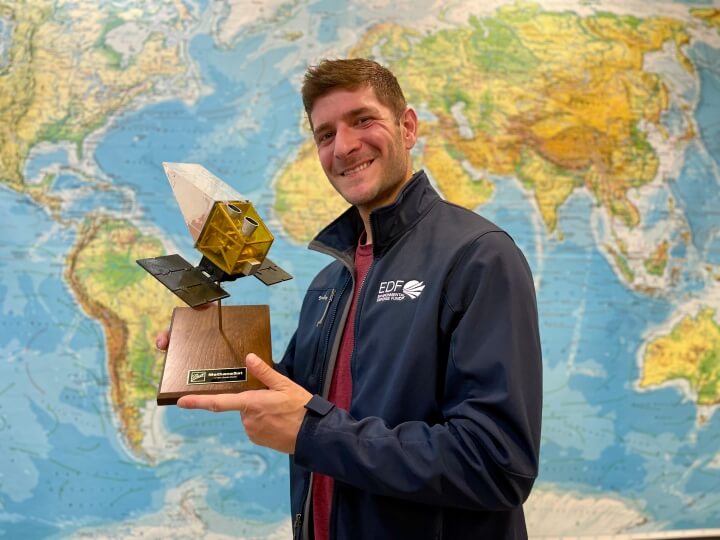
Joshua is a Senior Science Engineer for EDF, where he is working on the emissions detection and quantification systems focusing on atmospheric inversion of MethaneSAT and MethaneAIR observations to produce quantitative area-resolved methane fluxes. He also developed science and target planning software for MethaneSAT. He holds a BSc and MSc from the University of Waterloo in Canada and a PhD from Harvard University.

Jon oversees communications and media relations for MethaneSAT LLC, and, in a separate capacity, is Senior Director of Communications at Environmental Defense Fund. He has worked in environmental and energy communications with a wide range of non-profit and private sector clients and partners for more than 20 years.
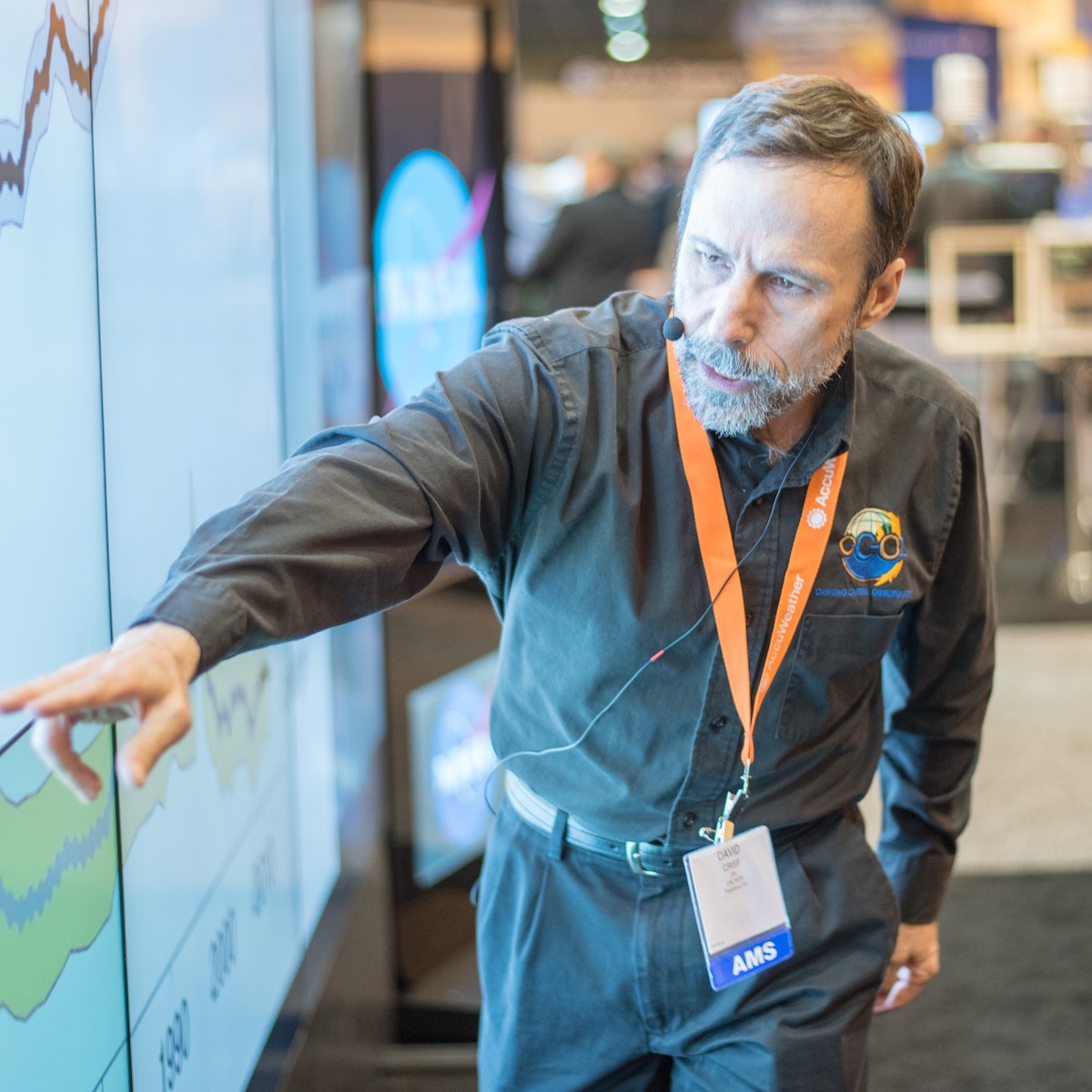
Dave is an atmospheric physicist and founder of Crisp Spectra, LLC an environmental science consultancy. Previously his career at NASA’s Jet Propulsion Laboratory focused on development of instruments and numerical models for analyzing light reflected, emitted, and scattered by atmospheres and surfaces of the Earth and other planets. He served as a flight instrument provider and science team member on several Earth, planetary and astrophysics missions. He was the Principal Investigator of the NASA Orbiting Carbon Observatory (OCO) mission and served as the science team leader for NASA’s OCO-2 and OCO-3 missions. He also served as the greenhouse gas lead for the Committee on Earth Observation Satellites (CEOS) Atmospheric Composition - Virtual Constellation (AC-VC) and member of the CEOS/CGMS Working Group on Climate Greenhouse Gas Task Team.

Patricia spent her 35-year career at Lockheed Martin gaining broad and deep knowledge through a series of technical and leadership roles, influencing the designs of LM’s most innovative and successful space missions. She has worked in all phases of complex missions including SXI, GOES-R, DMSP and SBIRS. Previously, she worked at Lockheed Palo Alto Research Laboratories. She is an expert in Gerontology of Material Science as well as payload and satellite systems engineering.

Lisa helps oversee the daily management and operations of MethaneSAT. She has fifteen years of experience managing a wide variety of projects in the science and technology space. Before joining MethaneSAT, Lisa worked with the National Science Foundation and National Science Board, and most recently, Environmental Defense Fund.

Ritesh oversees the MethaneSAT science team at EDF. He leads satellite remote sensing efforts focusing on the global oil and gas sector using MethaneAIR and MethaneSAT observations. Previously, Ritesh was a research scientist at NASA’s Goddard Space Flight Center in the Climate and Radiation Laboratory with Universities Space Research Association and a tenured faculty member at the Indian Institute of Technology (IIT Bombay). His experience is in satellite remote sensing of methane emissions, aerosols, clouds, snow and the climate effects of air pollution. Ritesh also serves as Co-Lead for the Atmospheric Composition and Asian Monsoon (ACAM) program. He has nearly seventy scientific articles published in peer-reviewed literature.

Anthony is focused on characterization of methane emissions from the global oil and gas sector. His work also includes developing the target areas for both MethaneSAT and MethaneAIR in support of mapping and quantifying emissions globally. Prior to MethaneSAT, Anthony worked as a GIS professional and obtained his Masters in GIS and Bachelors in Earth System Science from Clark University.
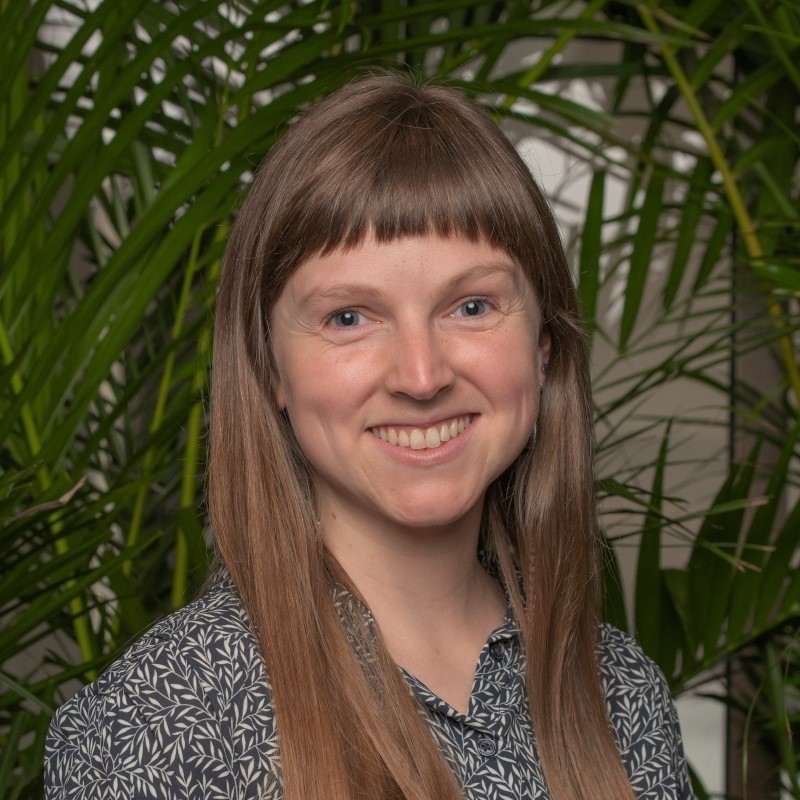
Mads (Madeleine) O'Brien works on global oil and gas infrastructure database development in support of interpretation and analysis of MethaneSAT emissions data products. She has a Master of Environmental Science degree from the Yale School of the Environment, and a BA from Wesleyan University.
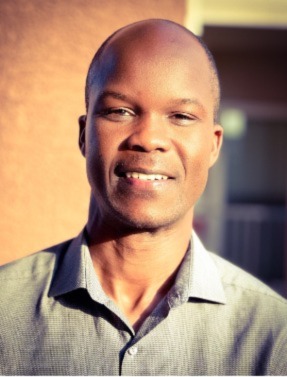
Mark is a Senior Scientist for Environmental Defense Fund, working on the MethaneSAT project. His current work focuses on global methane emission assessment using MethaneAIR and MethaneSAT observations. His research background is in oil and gas methane emissions measurement and characterization. He holds a PhD in Chemical Engineering from Clarkson University and previously worked as a postdoctoral research fellow at Carnegie Mellon University.
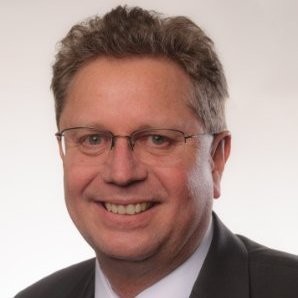
Brad is a 35-year veteran in the civil and commercial space sector. He led the system commissioning and production operations for the Space Imaging IKONOS system. He was VP of Operations for both GeoEye and Digital Globe, leading satellite operations, production operations, and software development activities. In his early career he was a circuit designer for earth observing systems, planetary probes, and weather satellites. Brad joins the program to spearhead the operationalization of the MethaneSAT system.
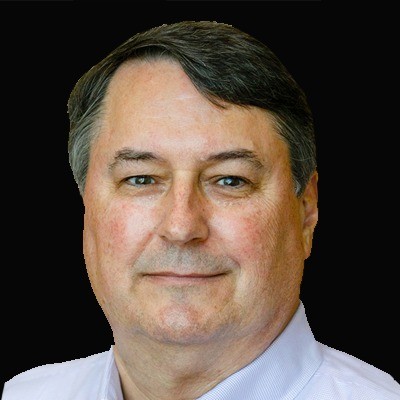
Peter leads the ground system development and mission operations for MethaneSAT. He has worked in industry, academia and at NASA, bringing over 30 years of senior leadership experience in space systems and flight operations for a range of space science missions. Most recently, he oversaw development of deep space navigation for the UAE’s Hope Mars mission and systems engineering for a university-led astrophysics cubesat project.

Chris is an atmospheric physicist specializing in applications involving radiative transfer in planetary atmospheres. He leads the development for Level-2 scientific algorithms for retrieving atmospheric methane concentrations. Previously, he worked on Earth-observing satellites as part of the TEMPO and OMI science teams and was a Co-investigator of the NASA MEaSUREs. Chris was a physicist at the Harvard-Smithsonian Center for Astrophysics and obtained his PhD from Harvard University in Earth and Planetary Science.
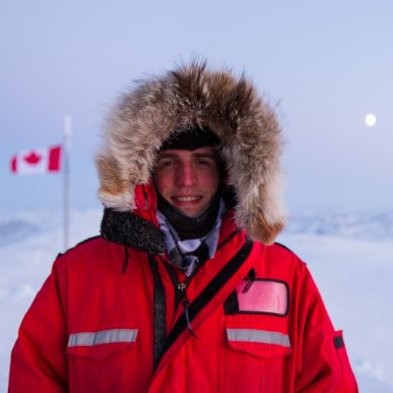
Sébastien works on the scientific algorithms used to derive the MethaneSAT Level 2 products. During his PhD at the University of Toronto, Sébastien experimented with a new algorithm of the Total Carbon Column Observing Network to retrieve vertical profile information of carbon dioxide concentration. He also worked on processing solar spectra from the Eureka (Nunavut, Canada) TCCON site. In a different project, he made use of NASA's ReFRACtor algorithm.

Kathleen has 13 years working with satellite, IFSAR, and LiDAR data. She has six years in the utilities industry in incident management, focused on network and computer operations. She has worked with the U.S. Geological Survey on the effects of urbanization on landscape, and with a startup company bringing Geiger-Mode LiDAR to the commercial market.
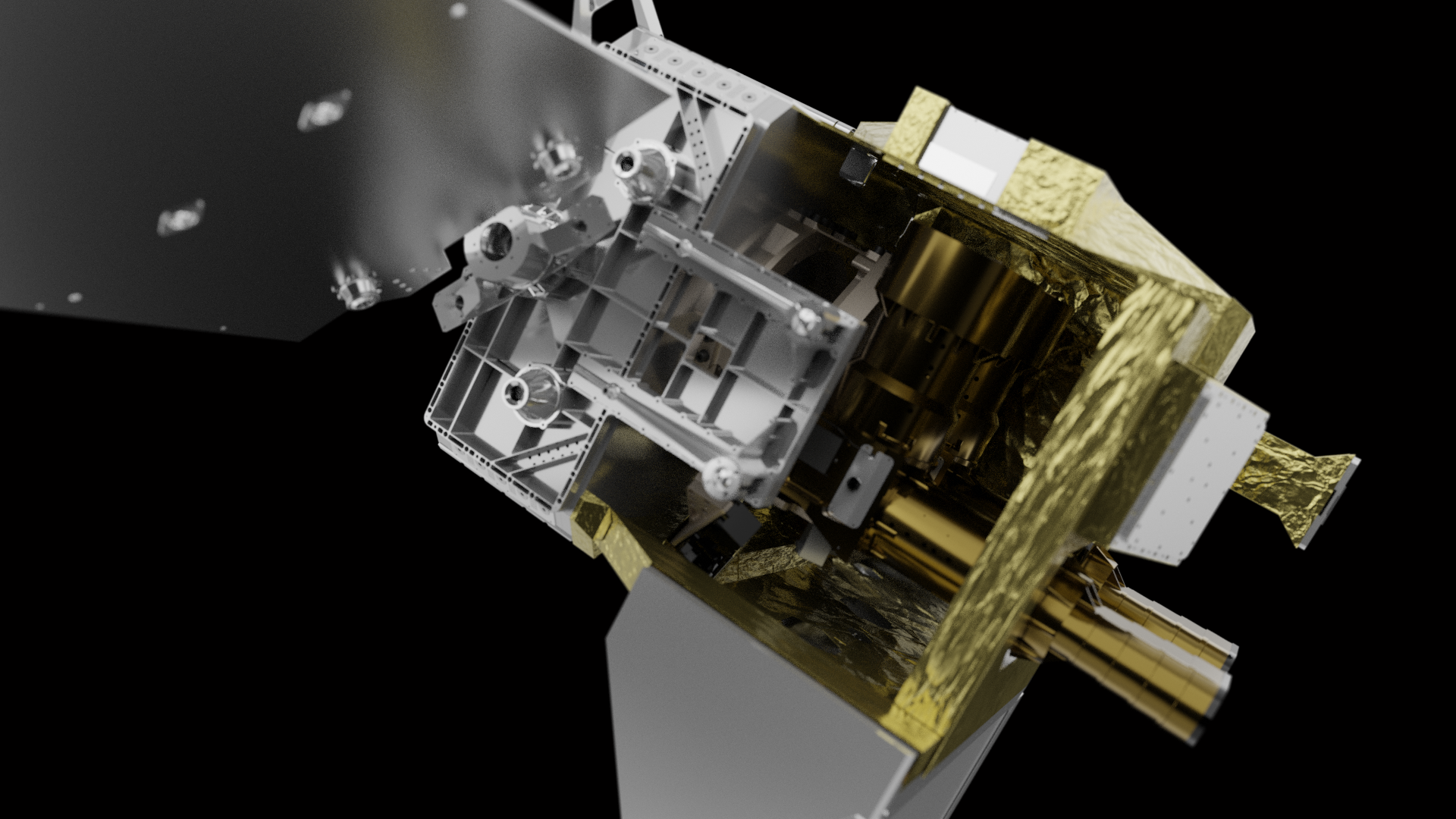
Corey works with our scientists and engineers to execute the day-to-day science data processing operations. She has extensive IT experience with a background across multiple industries including food distribution and logistics, automotive manufacturing, and banking. Before joining MethaneSAT, Corey worked with JP Morgan Chase Bank.

Nat is the first Site Reliability Engineer on the Mission Operations team, supporting the tools used by satellite operators for command and control. He has a background in software test management, and comes to MethaneSAT from healthcare, where he was developing telehealth software infrastructure for a large hospital network when a pandemic started.

Will Furstenau plays a key role in designing and optimizing scalable and resilient cloud infrastructure to help ensure the success of the company’s mission. He joins us from Goldman Sachs, at which he helped manage systems that provided automated retirement advice for thousands of clients daily.

Millie leads innovative projects that produce actionable data to help solve environmental problems. She currently leads Mission Impact for EDF’s MethaneSAT. Its ability to find and measure methane emissions with unequaled accuracy will provide the data required to motivate and reduce methane emission globally.

A graduate of Harvard Business School, Fiona spearheads strategy and operations for MethaneSAT Mission Impact, applying business, management, and entrepreneurial skills to bring the satellite's data to action and maximize the mission's impact on reducing methane emissions and stabilizing the climate. Fiona manages across MethaneSAT’s engineering, science, marketing & communications, and advocacy teams so that we can deliver emissions data to the public rapidly and effectively. Prior to EDF, she spent many years in international development nonprofit GiveDirectly, playing a pivotal role in the organization’s rapid growth and launching field operations in West Africa. Fiona started off her career as a management consultant at Deloitte Consulting.
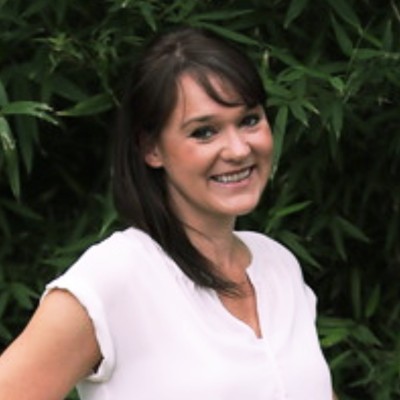
Kelsey has over a decade of experience communicating about climate change and methane research. She brings expertise in visual storytelling, information design and data visualization to the MethaneSAT team.
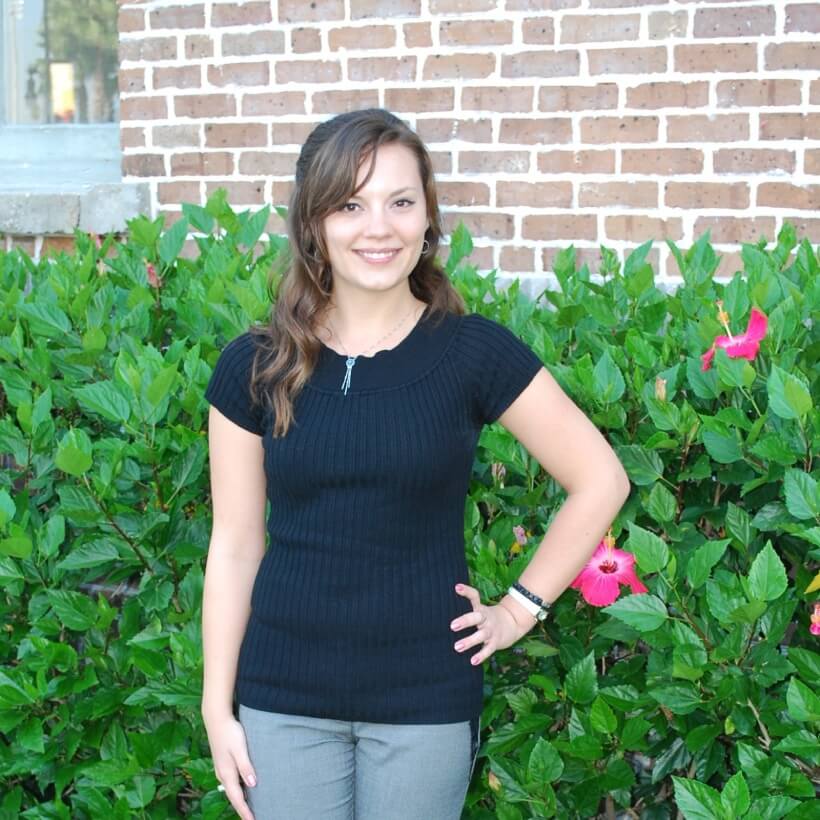
Erin has over seven years of experience in the geospatial and energy industry with a strong background in LiDAR. She has a Bachelor of Science in Marine Science, Biology, and Environmental Science from the University of Tampa with a publication in Acta Spartae, University of Tampa's first peer-reviewed journal. She has been a Task Lead for several government projects, an operator for the US Geological Survey Topo-bathymetric LiDAR collection in the Everglades National Park in 2017, as well as a sensor operator working with a prototype Riegl LiDAR sensor. She also has a strong background in disaster response data collection and analysis, and was a FEMA contractor for three years.
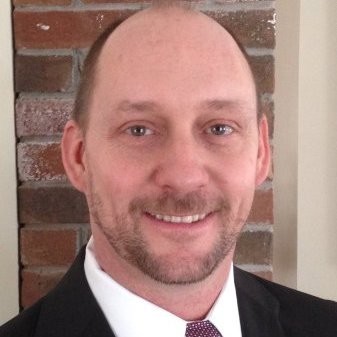
Eric has performed various roles in the satellite imagery industry working on both private sector and government projects, including producing 3D digital stereo airfield products and managing imagery product orders. Prior to working in remote sensing, Eric was an officer in the United States Army.
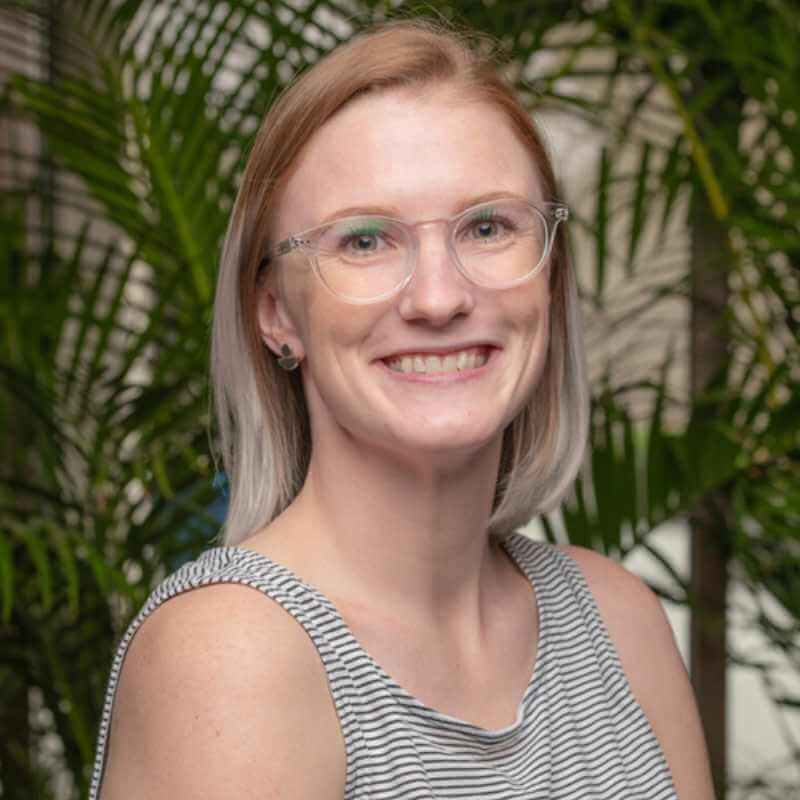
Katlyn’s work focuses on characterizing the magnitudes and sources of methane emissions in major oil and gas producing basins globally. She is also involved in analysis of MethaneAIR data. Katlyn has nearly a decade of experience measuring methane emissions across the oil and gas sector. She holds a PhD in Oil & Gas Engineering from Memorial University and a Master’s degree in Earth Science from St. Francis Xavier University.
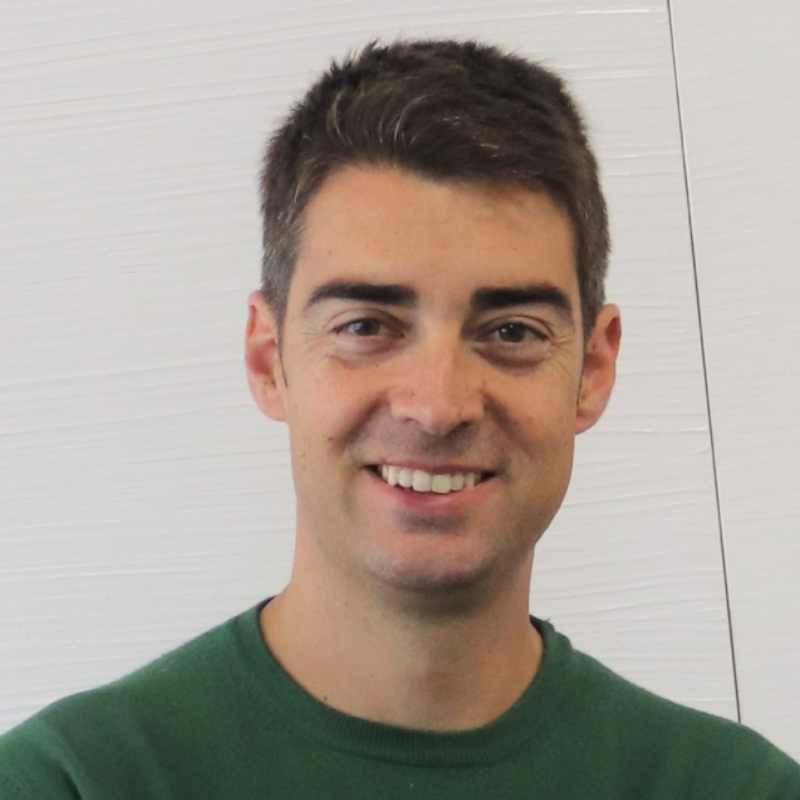
In addition to his role on MethaneSAT, Luis supports the development of UNEP-IMEO's Methane Alert and Response System. His current research focuses on detection and quantification of methane point source emissions for MethaneSAT/MethaneAIR and other satellite missions. Luis is also a faculty member at the Universität Politècnica de València in Spain, leading the Land and Atmosphere Remote Sensing research group. Previously, he was head of the Remote Sensing Section of the GFZ Potsdam in Germany and Principal Investigator of the satellite imaging spectroscopy mission in 2014.
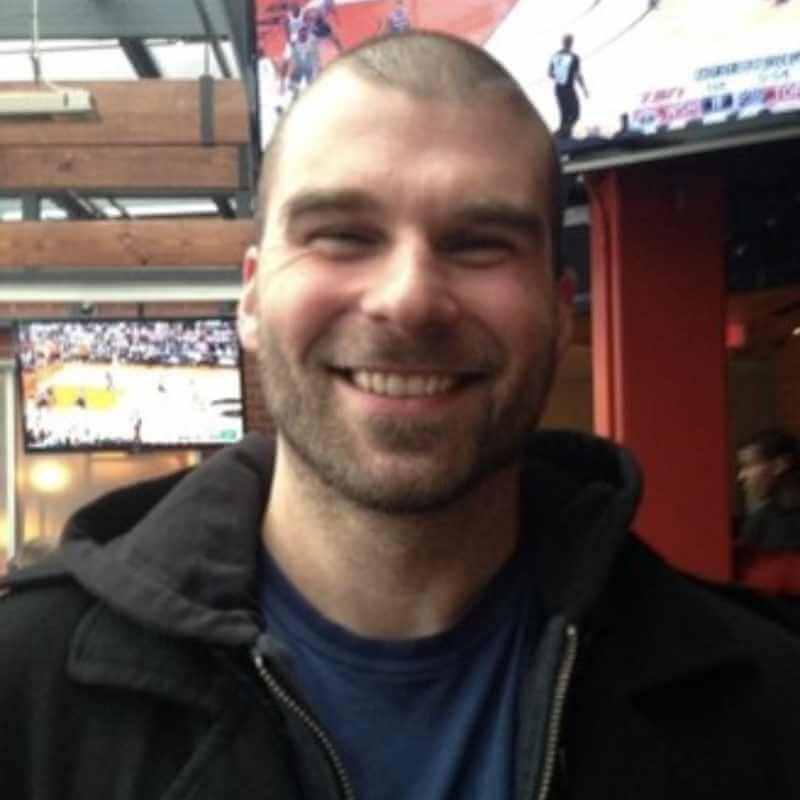
James Williams joined the MethaneSAT science team in June 2023. His work focuses on characterizing diffuse area methane emissions and developing emission distribution curves from the oil and gas sector. His previous research involved direct measurements and inventory development of methane emissions from abandoned oil and gas wells, gas distribution infrastructure, landfills, sewers, and urban water bodies. He earned his PhD at McGill University in Montreal, Canada.

Maya is focused on mission planning for in-orbit calibrations and development of machine learning models for MethaneSAT, with expertise in spacecraft/instrument operations, engineering systems, technology strategy, and space law and policy. She is the project lead and co-founder of HUMANS, an ISS and Lunar symbolic avenue for space access worldwide. She also served as co-lead of the Space Law & Policy Project Group at the Space Generation Advisory Council. She previously worked on space projects including NASA’s Mars 2020 Perseverance rover mission, Cassini’s mission activity on Titan, and the OneWeb satellites network. She holds Bachelor’s, Master’s, and PhD degrees in Aerospace Engineering from MIT.
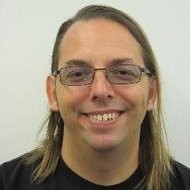
Tom is leading the development of MethaneSAT's Data Platform, transforming sensor bits into actionable analytics. Before joining MethaneSAT, Tom was Technical Lead/Manager of the Geo Imagery Analytics infrastructure team at Google, where he led the development of scalable, fault-tolerant services to process, store and serve core metrics like oil tank volumes and car counts. Tom has also held senior engineering roles in Open Source and Cloud Commerce (Google), Big Data (Skybox Imaging) and near-real-time content delivery (Yahoo!).
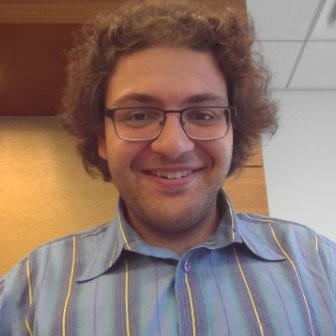
Sasha is a senior backend software engineer for MethaneSAT. He has a background in computational mathematics, and has previously worked in computer graphics (Techsoft3D), data processing pipelines (Google Poly), and computer vision (Google Lens).
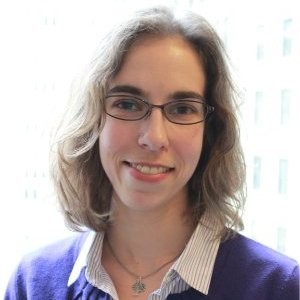
Emma is a frontend software engineer for MethaneSAT. Previously, she worked as a fullstack engineer at Tembo and PowerSchool, developing public data-reporting tools for state & local education agencies. In addition to her engineering experience, she brings a background in field biology and environmental education.
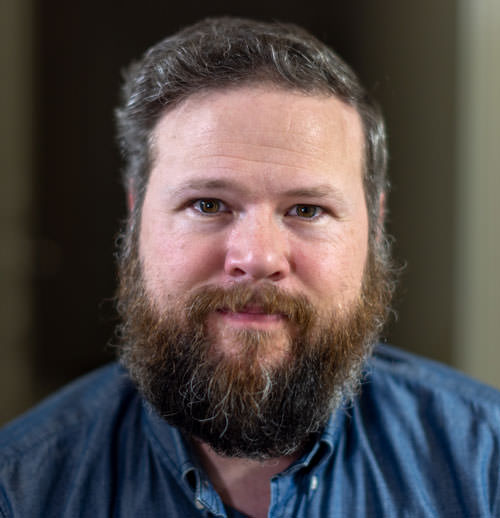
David Calhoun is leading the user interface and visualization efforts for MethaneSAT and will work closely with the EDF advocacy team, along with our industry partners. David previously held engineering positions at Netflix and Google.

Carlos is a software engineer focused on the back end of MethaneSAT’s Data Platform. Previously, Carlos was at Google, where he combined his knowledge of photography and software engineering to ensure that Google Maps had the best user-contributed photos possible. Additionally, Carlos has held engineering and leadership roles at Skybox Imaging, Yahoo! and Qualcomm.

Chris is a software engineer focused on MethaneSAT's data processing pipeline. He brings extensive experience developing cloud services. In addition, Chris has worked on geographic information systems (VertGIS) and has led security & privacy engineering efforts at multiple organizations.

Susan is the Senior Product Manager for MethaneSAT. After transitioning from the semiconductor industry into the clean tech industry, Susan held engineering positions testing and developing laser analyzers for environmental applications. Most recently she worked as a product leader managing the design and development of a hand-held methane leak detection solution.
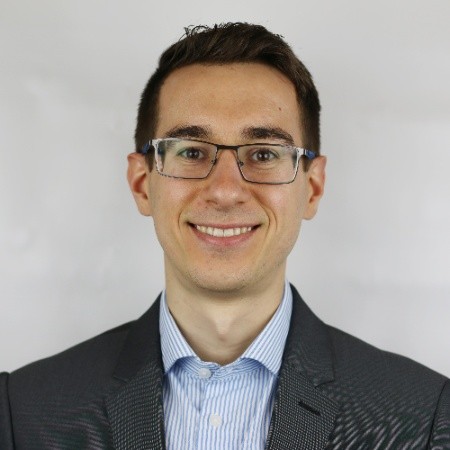
Nick LoFaso is leading our data pipeline efforts, working closely with our partners at Harvard University. In his previous role at Lutron Electronics, Nick led development of a cloud-based service to allow programmable control of various lighting components. Nick has also held engineering positions at Red-Spark (advertising tech) and Lockheed-Martin.
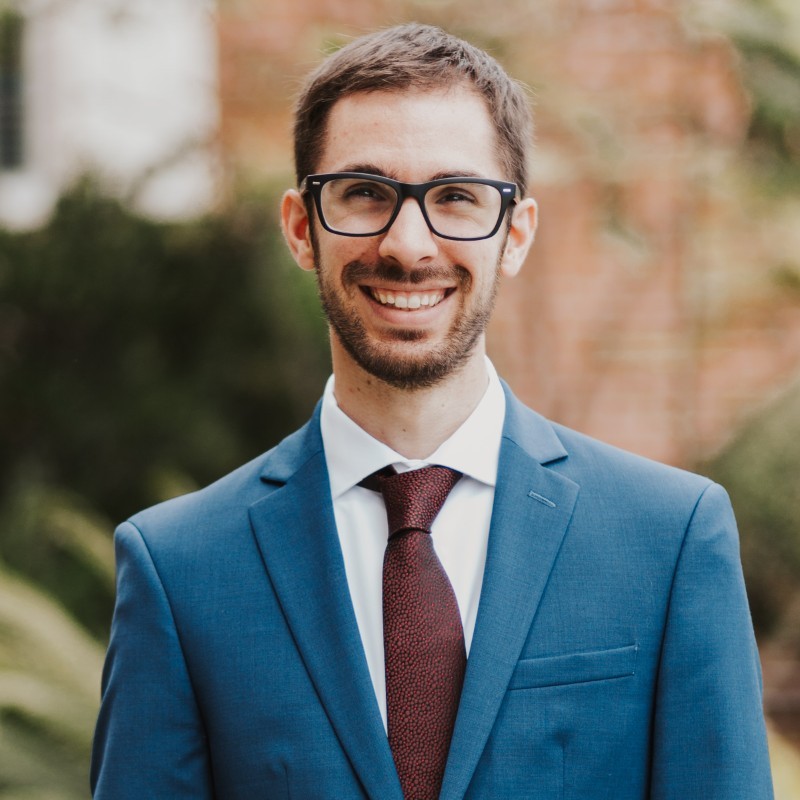
Cory works on the front end website for MethaneSAT. He most previously worked as a full stack software engineer at Housecall Pro, building the user interface for service professionals to manage their day-to-day operations.

Following a career as an admin assistant in the legal and educational fields, Kat attended a Software Bootcamp to expand her skills and change careers. MethaneSAT is her first foray in the world of software engineering.
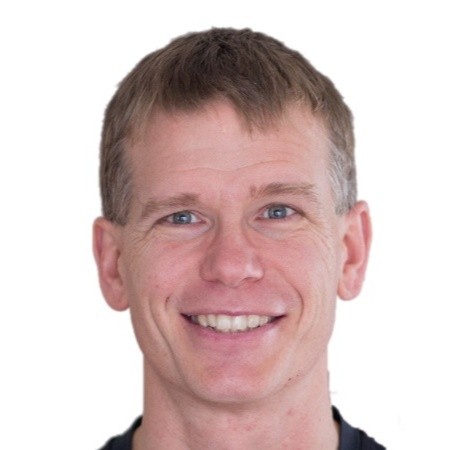
Justin Tyberg is building out the cloud infrastructure that will host both the MethaneSAT data processing pipeline and the data products. Justin has built and managed cloud infrastructure across multiple cloud providers for several companies. He also has experience in software development, data science, and aerospace engineering.
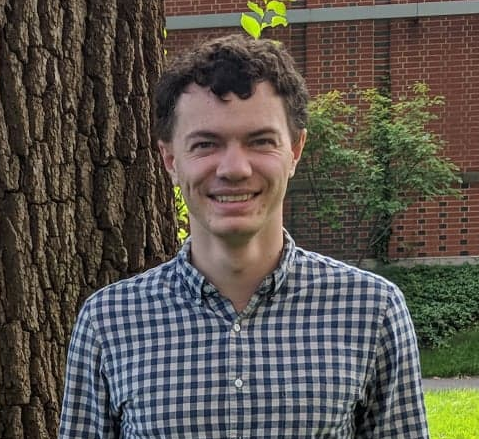
Marcus is a software engineer working on MethaneSAT’s data processing pipeline. His background is in computer science and infectious disease modeling. He brings extensive experience productionizing scientific computing workflows and building near-real-time modeling platforms, and has worked on Bayesian statistical inference and other simulation models.
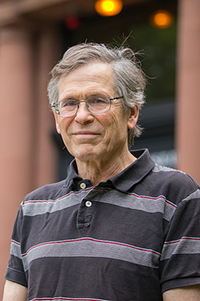
Steven is an Abbott Lawrence Rotch Professor of Atmospheric and Environmental Science; Area Chair for Environmental Science and Engineering. His efforts span the range of processes affecting atmospheric chemistry, including pioneering work on determining regional emissions of methane and carbon dioxide using ground, aircraft, and remote sensing measurements. His studies aim to understand underlying causes for change in atmospheric composition in order to mitigate impacts and provide scientific information for societal decisions.
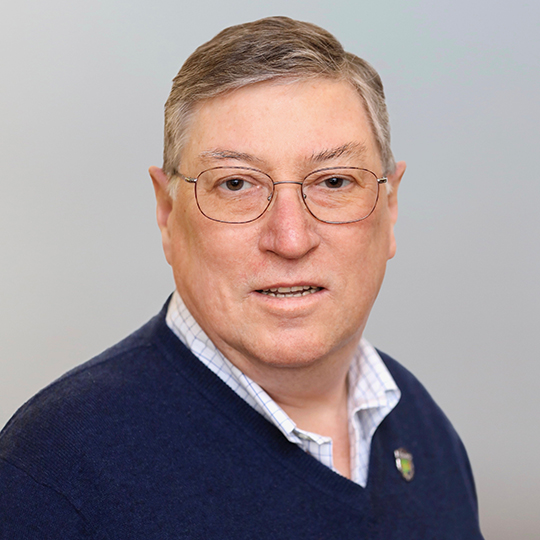
Kelly has worked in space-based measurements of atmospheric composition since 1985, and is Principal Investigator of TEMPO. He has developed algorithm physics for ultraviolet and visible measurements, proposed the now-standard method for tropospheric ozone measurements from back scattered light measured by satellites, and made the first global measurements of formaldehyde and glyoxal from space.

Ju is a Ph.D. candidate in Environmental Science & Engineering at the John A. Paulson School of Engineering and Applied Sciences at Harvard University. She developed scalable point source emission estimation approaches for the MethaneAIR and MethaneSAT. Her approaches utilize high-resolution atmospheric simulations and remote sensing observations of greenhouse gases.

John is responsible for the software that extracts the level-0 science data from the MethaneSAT instrument telemetry. He is also principal architect and software developer for the TEMPO Instrument Operations Center at the Harvard-Smithsonian Center for Astrophysics. Previously, he was a member of the Chandra X-ray Observatory Science Data Systems group at the MIT Kavli Institute for Astrophysics and Space Research.
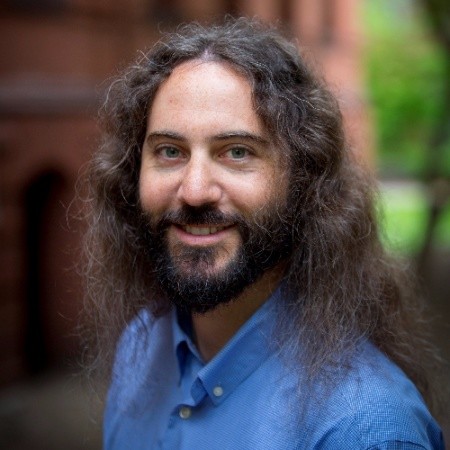
Jonathan is the Deputy Science Principal Investigator and Instrument Principal Investigator for MethaneSAT and is leading the calibration activities for the mission. He is a senior scientist at the School of Engineering and Applied Science at Harvard specializing in remote-sensing of methane and carbon dioxide. He also operates the Boston regional greenhouse gas column network which provides validation data to Earth observing satellites.

Xiong has extensive expertise in satellite retrievals of trace gases and aerosols, and satellite instrument development and calibration. He developed one of the most advanced ozone profile and tropospheric ozone retrieval algorithms for ultraviolet measurements. He is currently the Deputy Principal Investigator for TEMPO, and is the SAO lead on science and algorithms for the MethaneSAT project.
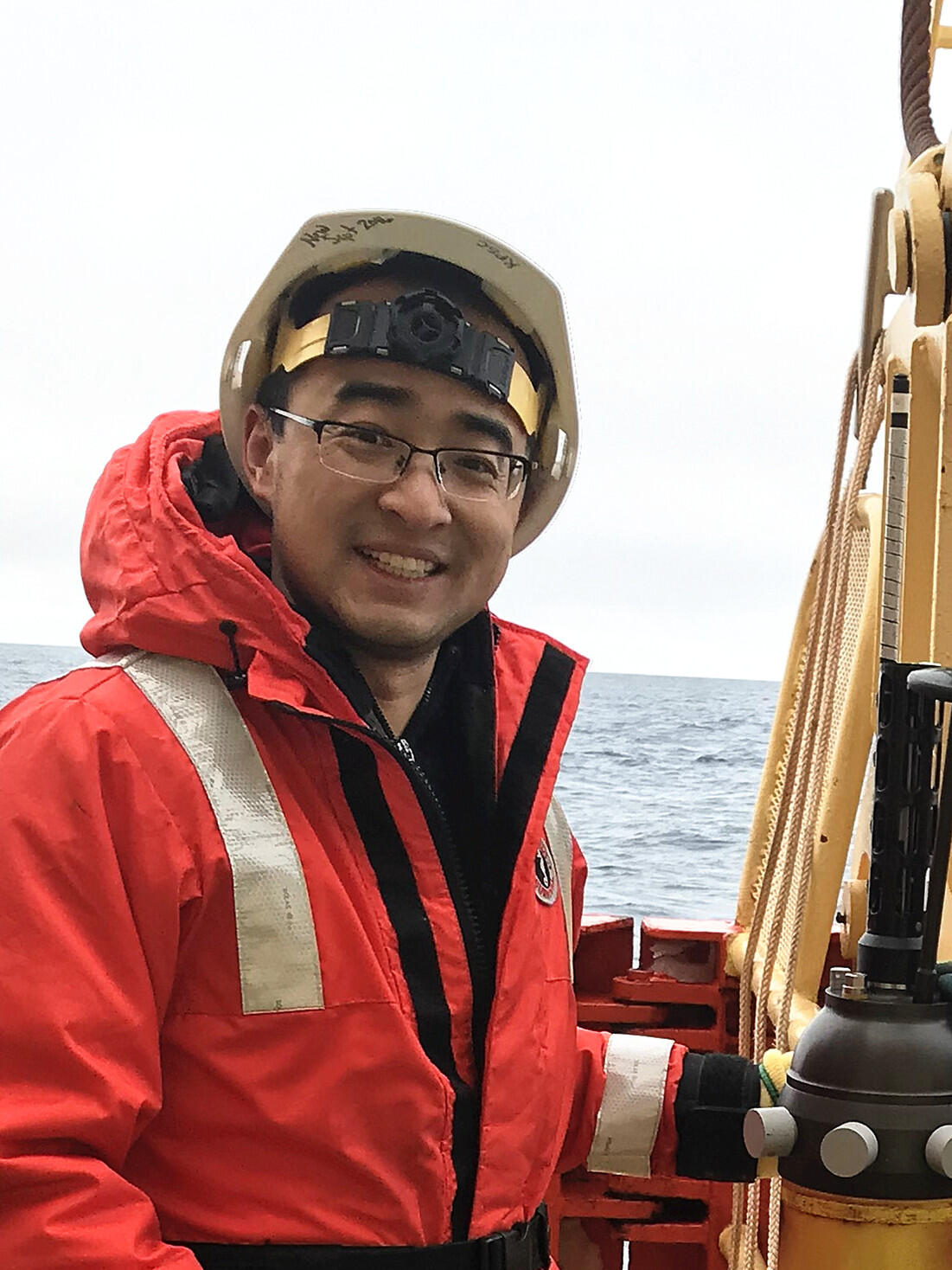
Bingkun has extensive expertise in radiative transfer modelling and remote sensing of sea surface temperature, surface radiative budget, and cryosphere. His work includes analyzing instrument calibration and testing data, and developing calibration methods for MethaneSAT.
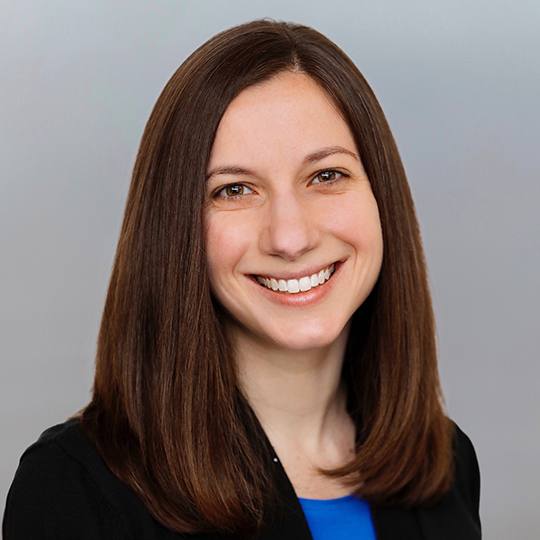
Jenna is an astrophysicist at the Smithsonian Astrophysical Observatory. She is overseeing the design, construction and testing spectrometers used in the MethaneAIR flight simulations for MethaneSAT, and on applications of MethaneAIR for studies of methane emissions in North America.

Maryann is a research scientist at the John A. Paulson School of Engineering and Applied Sciences at Harvard University. She developed a framework consisting of a sensor array a statistical transport model to quantify methane and carbon dioxise emissions in the Boston urban region. Her work on MethaneSAT includes designing models to quantify methane emissions from point and regional sources.
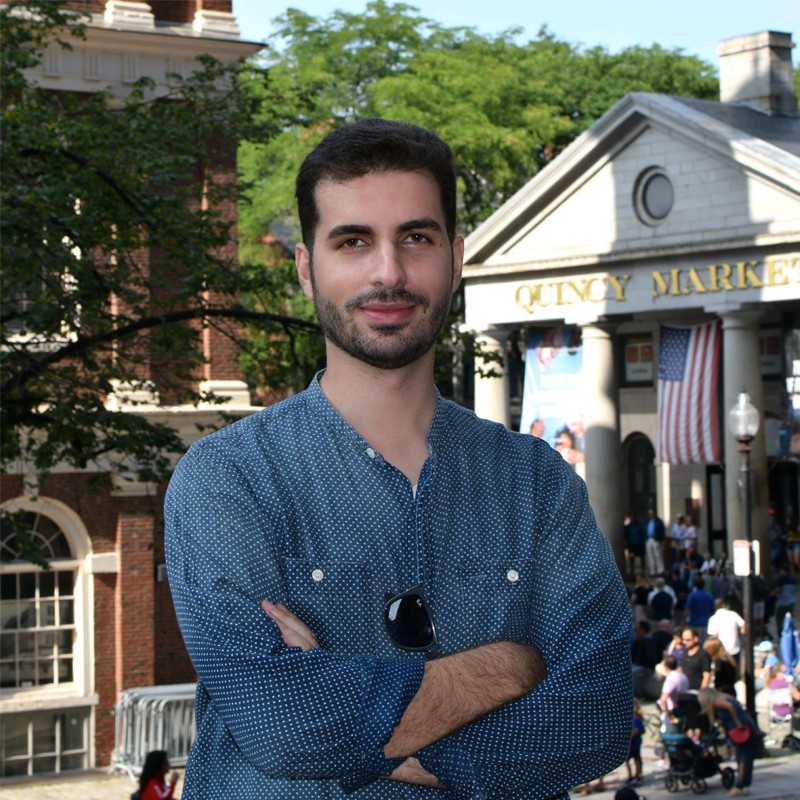
Amir has worked on the simulations of atmospheric chemistry and physics during NASA-funded campaigns including DISCOVER-AQ. He has incorporated air- and spaceborne remote sensing observations to improve the accuracy of different emissions and atmospheric states. His observationally constrained models have been used to inform mitigation strategies on man-made emissions. His work on MethaneSAT and MethaneAIR includes the forward and inverse simulations of synthetic radiance; development of a geolocation correction algorithm; and denoising.

Kang is an assistant professor affiliated with the Department of Civil, Structural and Environmental Engineering and the University of Buffalo RENEW Institute. He developed an open-path, quantum cascade laser-based sensor for atmospheric ammonia detection, and has worked with the science teams of OCO-2, OMI, and TEMPO. His research includes methane retrieval algorithm development, emission quantification, and deriving surface concentrations from satellite column measurements.
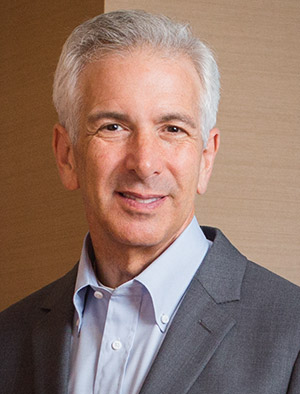
Fred is an influential voice on climate change, energy, and sustainability, and a champion for using the power of markets to protect our environment. Under his leadership since 1984, EDF has become one of the world’s largest and most influential environmental organizations. More recently, he coined the notion of a “Fourth Wave” of environmental innovation, where new technology, advanced analytics and collaborative problem-solving combine to shape smart policy and reward corporate responsibility, allowing both people and the planet to prosper. Fred introduced the idea for MethaneSAT in an April 2018 TED Talk.
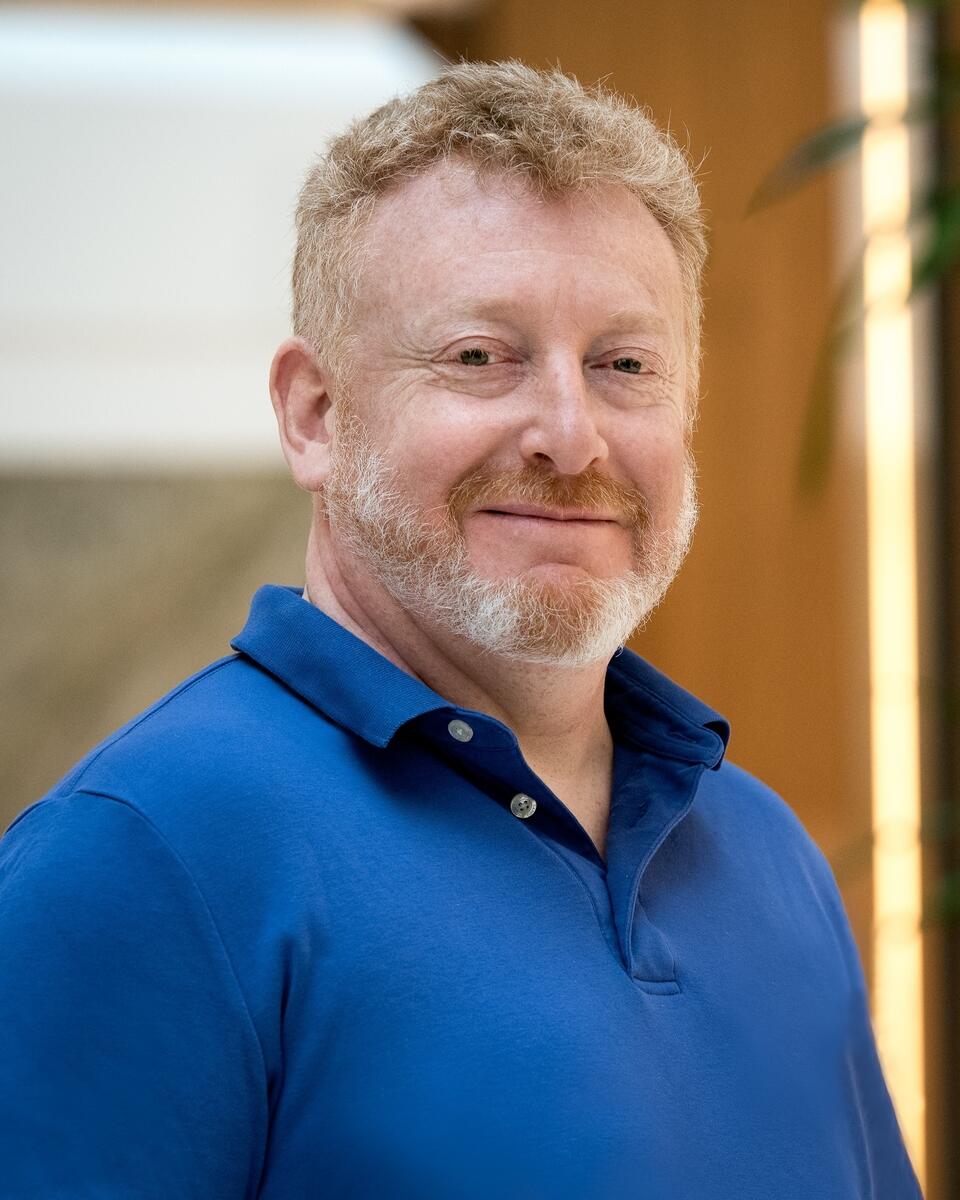
Mark is the chief architect of EDF’s global methane campaign, and leads EDF’s Energy Program. Mark was one of two staff leads on the United States Climate Action Partnership, a coalition of corporations and environmental groups championing federal cap-and-trade legislation. Prior to EDF, he held several senior management positions in the electric and gas utility industry, and started his career as an air quality regulator.

Tony Fadell is an active investor and entrepreneur with a 30+ year history of founding companies and designing products that improve people’s lives. He is the Principal at Future Shape, an investment and advisory firm coaching currently coaching over 300 deep-tech startups innovating game-changing technologies. He is also the founder and former CEO of Nest, the company that pioneered the “Internet of Things.” Tony was the SVP of Apple’s iPod Division and led the team that created the first 18 generations of the iPod and the first three generations of the iPhone. Throughout his career Tony has authored more than 300 patents.

Kalee Kreider advises major corporate, philanthropic and non-profit clients on issues of sustainability, climate change and technology. She has decades of experience in public affairs. In addition to her work as a consultant, Kalee has served as Chief Media and Public Affairs Officer for the National Geographic Society overseeing brand, marketing, communications, impact media, public events and the Museum. She worked for years as environmental adviser and communications director for Vice President Al Gore -- assisting with the slideshow that served as the basis for "An Inconvenient Truth".
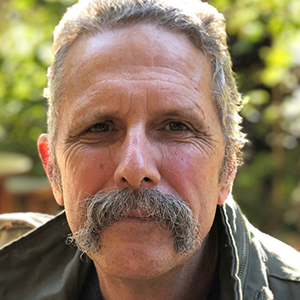
Bryn brings 40 years of experience in high-tech development to the MethaneSat team. In his most recent role, he served as System Architect at Lockheed Martin Space where he developed conceptual designs for new space systems and executed advanced design studies. Previous roles included Program Manager, Chief Engineer, and Director of Software Engineering as well as serving as the Director of Systems Engineering for Lockheed Martin Commercial Space Programs.
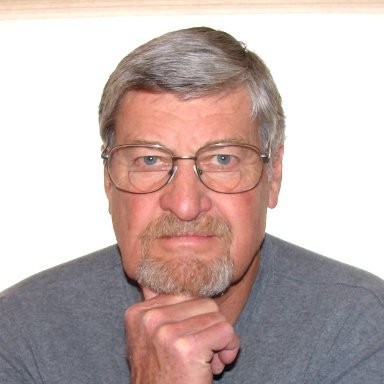
Jim Austin was lead engineer on numerous spacecraft and space science instrument projects as a materials and processes engineer, and a contamination control engineer during 38 years at Ball Aerospace. He has also consulted with Skybox Imaging and Arizona State University. His background includes optical thin film technology, graphite fiber composite materials and adhesives technology.
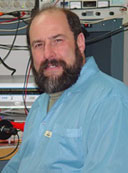
Steve is a graduate of the University of Michigan with 42 years of experience as a system engineer, designer and manager for NASA and DOD space projects. He is well known within the space community for his science and engineering leadership related to the development of unique electronic systems and scientific space instruments for Earth observing, planetary geochemistry, space physics and astrophysics applications. President of Battel Engineering since 1990, Steve is also an Adjust Clinical Professor in the departments of Electrical Engineering and Climate and Space at the University of Michigan. He is a member of the National Academy of Engineering (NAE), a Fellow of the American Institute of Aeronautics and Astronautics, and a Fellow of the American Association for the Advancement of Science.

Jonny leads hardware development for Lyft’s driverless car program, after heading up hardware system development at Google's mapping division, Geo. Before that he spent seven years as Chief Engineer of Skybox Imaging, where he helped develop the first VC-funded NewSpace startup into an organization with the world’s largest constellation of high-resolution Earth Remote Sensing satellites. Prior to Skybox, Jonny spent five years doing fundamental research on rocket propulsion technologies.
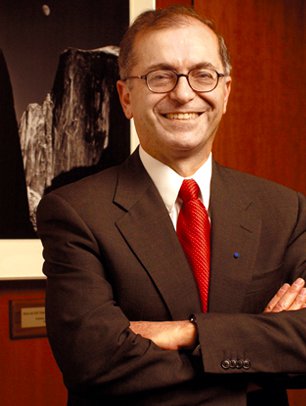
Dr. Charles Elachi is Professor Emeritus of Electrical Engineering and Planetary Science at the California Institute of Technology. From 2001 to 2016, he served as Vice President of Caltech and Director of the Jet Propulsion Laboratory , overseeing over 45 flight missions and instrument development projects. He was principal investigator on numerous NASA-sponsored studies and flight projects including the Shuttle Imaging Radar series, the Magellan Imaging Radar; the Cassini Titan Radar; and a Co-Investigator on the Europa Sounding Radar.

An entrepreneur and theoretical physicist, John is Vice President of Collaborative AI at Salesforce National Security, where he leads a team of software engineers creating information retrieval algorithms and a team of intelligence analysts that embed with customers. He has 15 years’ experience as facility security officer at startups with DOD top secret facilities clearances and has led three IT systems through NIST 800-53 accreditations for government customers. In 1999, John founded MetaCarta, which pioneered map-based search and was acquired by Nokia in 2010. John served as Chief Architect for Search at Nokia until 2012, when he founded Diffeo, which was acquired by Salesforce in 2019.

Darren has over 25 years of space experience spanning traditional Class A programs to commercial New Space small satellites. Darren started his career at TRW as part of the trajectory section and now as a consultant continues to support the design, development and operations of challenging space missions. He has directly supported over 36 successful missions providing pre-launch orbit analysis through to director of mission operations.

Dennis Hewitt worked for the NASA Goddard Space Flight Center (GSFC), contributing to the design, analysis, and testing of many spacecraft and instrument projects. Positions included Head of Thermal /Contamination Engineering Branch; Observatory Manager for the X-Ray Timing Explorer; and lead thermal engineer on numerous NASA Projects. Since retiring from GSFC he has consulted for Bay Engineering Innovations, Inc., providing systems, thermal engineering and project management support. Most recently, he has supported the GSFC Thermal Infrared Sensor (TIRS2) systems team.
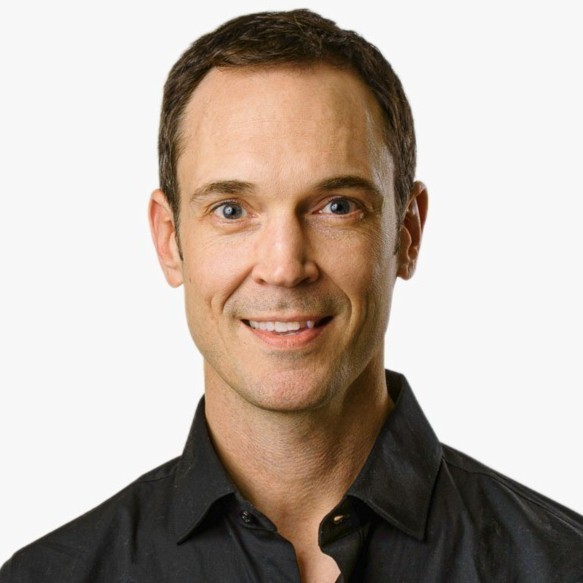
Andy is a technical product leader with more than 20 years of experience building extraordinary products and teams based on ambitious scientific research and engineering. He is the Vice President and head of Product at Cerebras Systems, where his team is building a revolutionary new computer system to accelerate artificial intelligence. Previously, Andy was a Product Manager lead for geospatial data platform and analytics at Google, Senior Director for advanced technologies at Skybox Imaging, and a Senior Scientist and Program Manager working on remote sensing image and signal processing at Arete Associates.
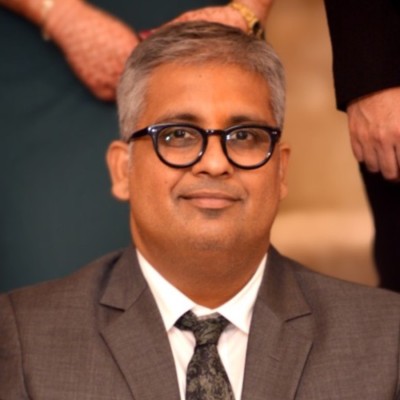
Shaunak works as a Principal Software Engineer at Elastic, helping build their data ingestion products. Previously, he worked at Skybox Imaging, leading the back-end ground systems team responsible for command-and-control and algorithmic tasking of Skybox’s satellites. Additionally, Shaunak has held engineering roles at Code for America (2013 Fellow), Yahoo! (Tech, Music, and News teams), Netflix (Open APIs team), and Rackspace (Developer Experience team).
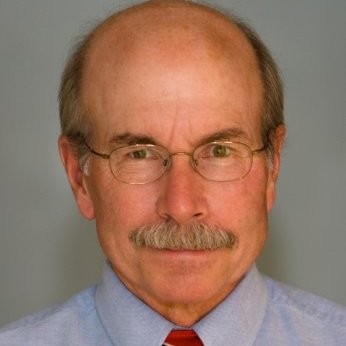
Mark Lankton has over forty years of hands-on experience as an engineer and manager on space science projects. During his career at the University of Colorado’s Laboratory for Atmospheric and Space Physics he built instruments that traveled to every planet in the solar system and to the moon. He has been a member of the Standing Review Board for the Emirates Mars Mission and has chaired reviews of many space flight science instruments.
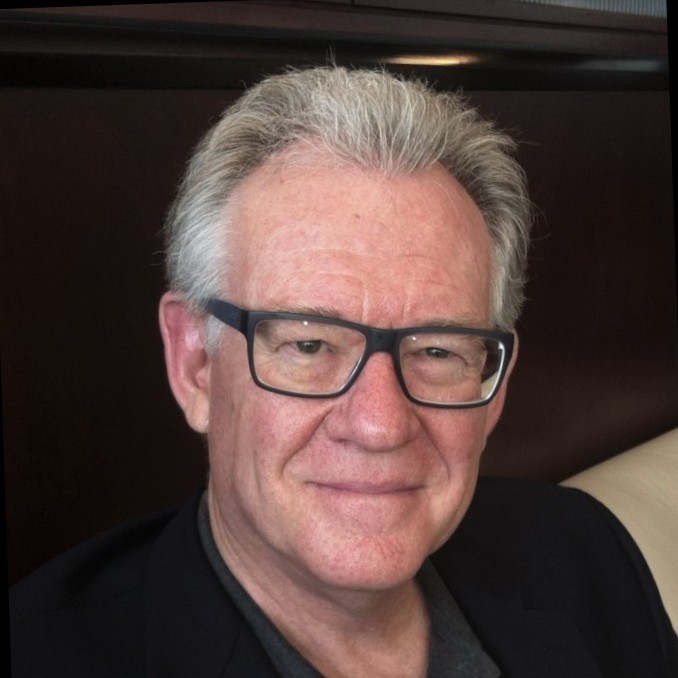
Dan is an atmospheric scientist and founder of Synoptic Science, a space science and mission formulation consultancy. Previously, he was Chief Scientist at NASA’s Jet Propulsion Laboratory. Concurrently, he was Director of JPL’s Innovation Foundry. Dan was also Principal Investigator for the Mars Climate Sounder onboard the Mars Reconnaissance Orbiter. As Chief Scientist for JPL’s Mars Exploration Directorate, he was a principal architect for NASA’s Mars Exploration Program.

William retired from Lockheed Martin in 2011, where he helped design DigitalGlobe's WorldView 4 imaging satellite. At Lockheed, Bill worked in Attitude Control Systems (ACS) and Systems Engineering for Hubble Space Telescope, Special Programs, Iridium, Ikonos (world’s first commercial imaging satellite), SBIRS and P909.
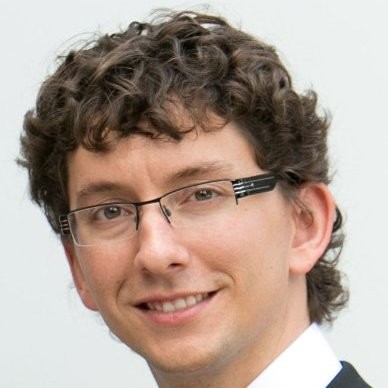
Maxime is an Instrument Systems Engineer for the WFIRST flagship telescope, a wide-field near-infrared imager and spectrometer. Previously, he worked on a visible-light Integral Field Spectrograph for NASA’s WFIRST Coronagraph Instrument, dedicated to the detection and characterization of exoplanets.

Dirk Robinson works at the intersection of imaging, machine learning, and global-scale software engineering. He leads software engineering teams building the Google Maps platform. He previously worked on design and building of the imaging systems for Skybox. Before that, Dirk lead a computation imaging R&D team designing imaging products for Ricoh.

Barry owns Hoku Akamai LLC, a science and engineering consulting and technical services firm. He is an expert in imaging system design and fabrication, specifically high-performance optical and infrared detectors and focal plane arrays (FPAs). From 2003 to 2018, he was a Senior Engineering Fellow at Raytheon. Previously, Barry worked on optical and infrared FPA development and characterization for Canada France Hawaii Telescope and the US National Optical Astronomical Observatories (NOAO).
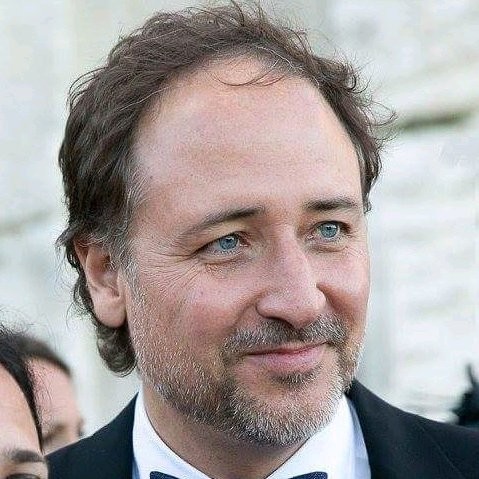
Ion is Managing Partner at Capricorn Investment Group, and an early investor in technology companies including Tesla, SpaceX, Planet, QuantumScape and Saildrone. Previously, Ion was a Director with Koch Industries, executing a range of acquisitions and investments. Before that, he was a founder and CEO of the software startup Bivio, and the second employee of the foreign exchange analytics company Olsen & Associates.
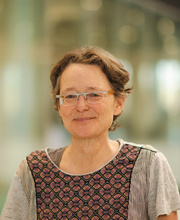
Ilse is senior scientist in the Earth Science Group at the SRON Netherlands Institute for Space Research and co-Principal Investigator on the TROPOspheric Monitoring Instrument (TROPOMI), an instrument on board ESA's Copernicus Sentinel-5 Precursor satellite. She is an expert on remote sensing of the Earth’s Carbon cycle and shortwave infrared imagery.
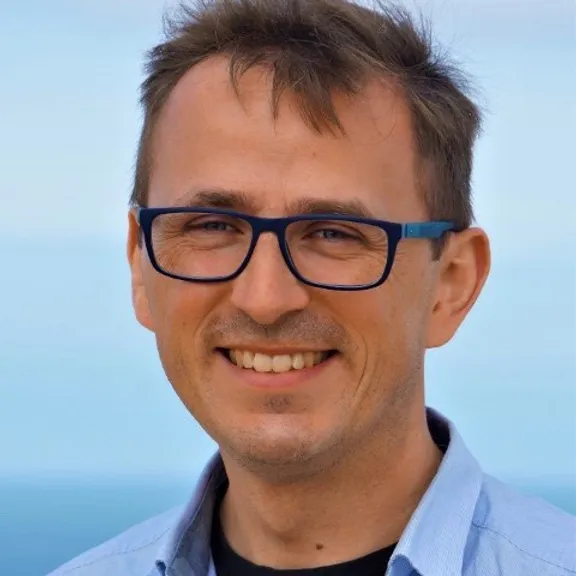
Dr. Andre Butz heads the Atmospheric Physics branch of the Institute of Environmental Physics at the University of Heidelberg. They explore the gaseous and particulate composition of the Earth's atmosphere with a focus on the greenhouse gases methane and carbon dioxide. They use and develop spectroscopic sensing techniques enabling accurate measurement of greenhouse gas concentrations from satellites and ground-based platforms.

Brian leads BC Scientific Consulting LLC in Wellington, New Zealand, and is a senior advisor for the NZ-based MethaneSAT science team. He is an atmospheric scientist specializing in data retrieval algorithm development and uncertainty assessment for remote spectroscopic measurements of atmospheric constituents. Brian played a leading role in these areas for the Orbiting Carbon Observatory-2 (OCO-2). He is also the founder of Total Carbon Column Observing Network (TCCON) in New Zealand.
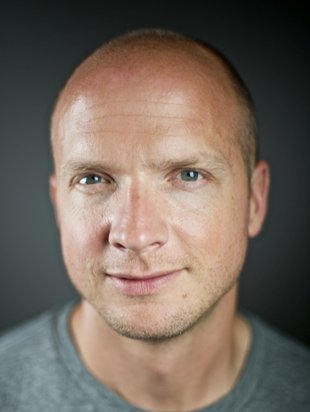
Christian is Professor of Environmental Science & Engineering at the California Institute of Technology and Research Scientist at NASA’s Jet Propulsion Laboratory. He has over 10 years’ experience in methane remote sensing from space and aircraft, and developed retrieval algorithms enabling the first global observations of total column methane from space.

Daniel is the Vasco McCoy Family Professor of Atmospheric Chemistry and Environmental Engineering at Harvard University, and Faculty Associate at the Harvard Center for the Environment. His research covers a wide range of topics in atmospheric chemistry, from air quality to biogeochemical cycles and climate change. He leads the development and management of the GEOS-Chem global 3-D model of atmospheric composition used by over 200 research groups around the world. He has served as Mission Scientist on eight NASA aircraft missions.
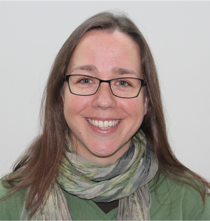
Julia is a Research Scientist and Leader of Satellite-based Remote Sensing of Greenhouse Gases Group at the Max Planck Institute for Biochemistry. The focus of her research is fluxes of carbon dioxide and methane using satellite measurements, and efforts to harmonize flux estimates based on satellite- and surface-based measurements.
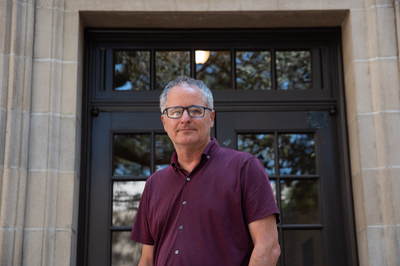
Paul is Director of The Linde Center for Global Environmental Science at the California Institute of Technology. He created the Total Carbon Column Observing Network (TCCON) to measure the distribution of greenhouse gases across the globe, and is a co-Investigator on NASA’s Orbiting Carbon Observatory-2 (OCO-2) satellite. He studies atmospheric photochemistry and the terrestrial carbon cycle.
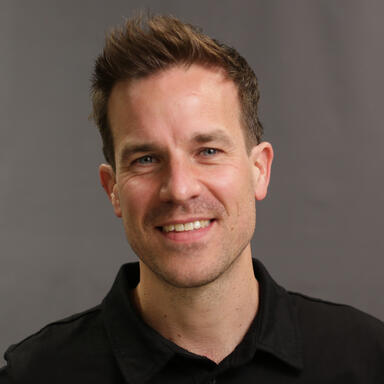
Benjamin has over 14 years of experience in the aerospace industry. He holds two MSc degrees in aerospace engineering from the University of Liege in Belgium and Supaero in France, as well as a diploma in engineering management. He started his career in aeronautics, where he supported process, methods, and tools improvement for Airbus A350 & A380. He then transitioned to the space sector, where he managed 10+ interleaved spacecraft launch campaigns (ATV-4/5, Gaia, AlphaSat…) as a spacecraft facilities operations manager at the European Space Center in French Guiana, for the French space agency. Since then, he has specialized in spacecraft operations for multiple science missions, including CONOPS development, support to commissioning, routine, and EOL activities. He currently serves as the Lead Spacecraft Operations Engineer of MethaneSAT for Rocket Lab.
Francois Toussaint worked before on different LEO missions at the French space agency (CNES) as Spacecraft Operations and Flight Dynamics Operations and he joined Rocket Lab as well as MethaneSAT project a year ago. In his opinion, delivering the Flight Dynamics System (FDS) of MethaneSAT is a great milestone as the station keeping using electrical propulsion is a key element for the science products quality. The MethaneSAT FDS is also a challenge to automate as much as possible, including the collision avoidance process, to allow easy and cost-effective routine operations especially after the handover on the University of Auckland.
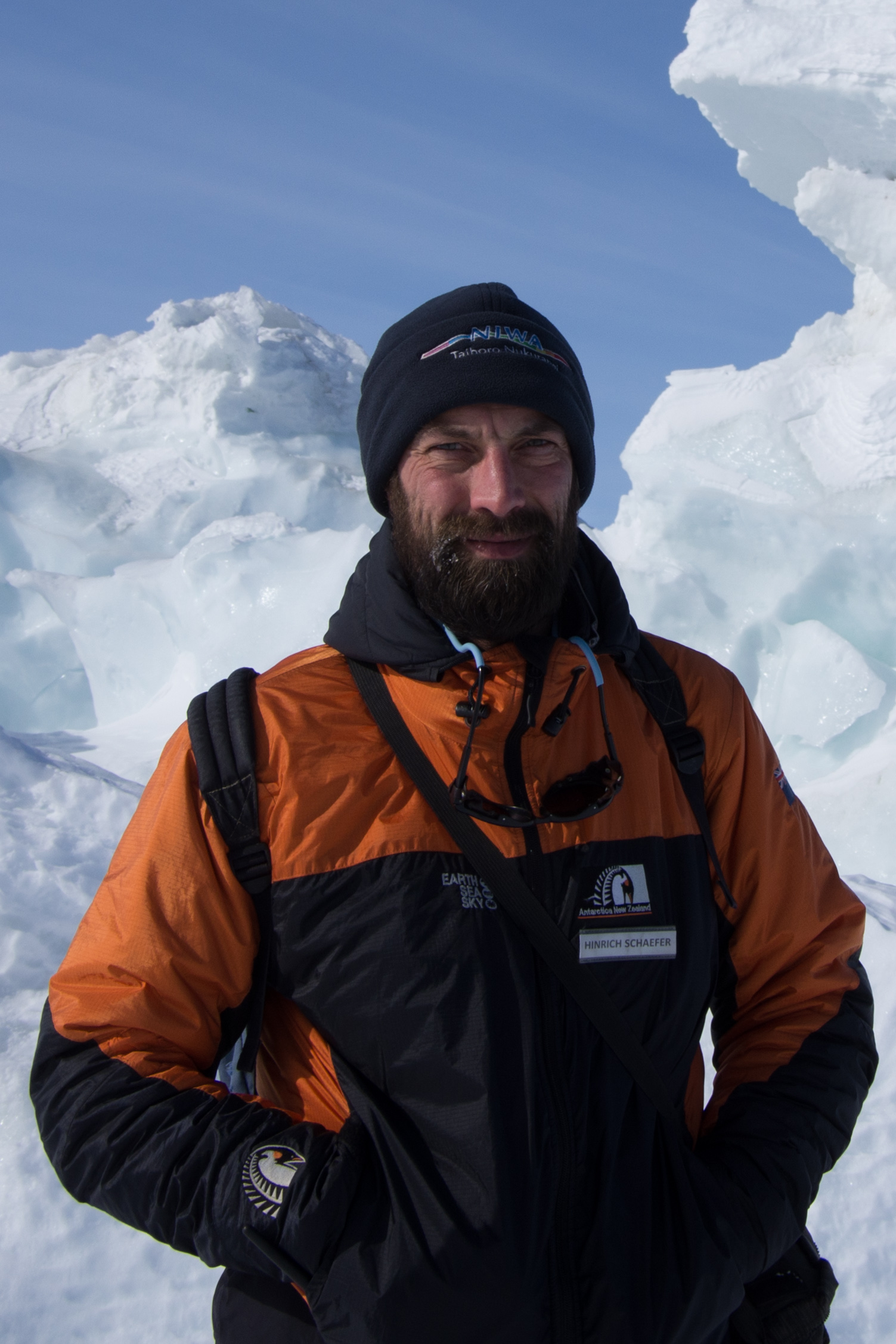
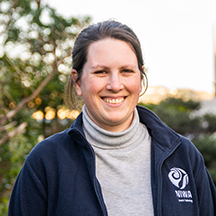
Dr. Beata Bukosa's work on MethaneSAT includes developing the emission estimation models for agricultural diffuse sources, part of the New Zealand agricultural research programme.
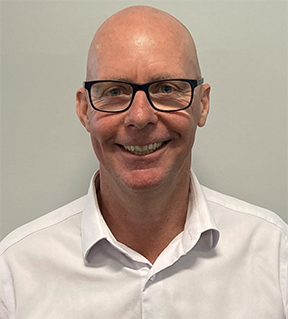
Iain Cossar is the General Manager Science, Innovation and International at the Ministry of Business, Innovation and Employment. He has responsibility for science and innovation policy, international science and innovation partnerships, MBIE’s trade and international functions and leadership of the New Zealand Space Agency. Prior to this role, Iain held General Manager roles in Tourism, Economic Development, Competition and Consumer Law at the Ministry of Business, Innovation and Employment and has also held senior roles within the Ministry of Primary Industries and the New Zealand Treasury.

Russell brings over 25 years of experience in managing and developing complex software systems for mission-critical applications. Most recently, he served as Director of R&D at Qwaltec, overseeing creation of a TCPED Mission Operations SaaS platform on Amazon Web Services. His background includes multiple special programs involving airborne and spacecraft sensing technologies. He also has extensive experience in research, architecture, development, training, and maintenance of mission systems.

Jack joined Environmental Defense Fund in 2021 researching methane emissions in the Permian Basin as part of the PermianMAP project. As part of the MethaneSAT science team, his research and analysis now focuses on the evaluation, attribution, and analysis of methane emission sources detected by MethaneAIR and MethaneSAT observations globally. He has a bachelor’s degree from Columbia University.
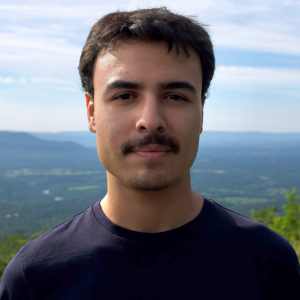
Julio recently graduated with a bachelor’s degree in Computer Science from Northwestern University and took on a software engineering internship with MethaneSAT following graduation. Now a Front-End Software Apprentice, he works on the UI for the data platform.
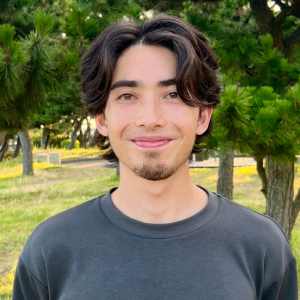
Kaiya is a Geospatial Analyst focusing on large-scale oil and gas and non-oil and gas data and other geo-analytics. He worked as a geospatial data scientist in the past, and obtained his master’s and bachelor’s degrees from Boston University studying Remote Sensing/Geospatial Sciences and Earth/Environmental Sciences.
We are grateful to the supporters who made this project possible.
- Arnold Ventures
- The Audacious Project
- Ballmer Group
- D N Batten Foundation
- The Benificus Foundation
- Bezos Earth Fund
- Christina and Jeffrey Bird
- Builders Vision
- Catena Foundation
- The Ting Tsung and Wei Fong Chao Foundation
- The Children's Investment Fund Foundation
- J and Suzanne Crandall
- Rachel Crane
- John S. Curry
- Duff & Phelps Charitable Foundation
- Tony Fadell
- Bev Grant
- Heising-Simons Family Fund
- Amos and Barbara Hostetter
- King Philanthropies
- The Lemelson Foundation
- Patrick J. McGovern Foundation
- Julie and Ian McGuire
- The Cynthia & George Mitchell Foundation
- New Zealand Ministry of Business, Innovation, and Employment
- Charles M. Nunzio
- Bill and Susan Oberndorf Foundation
- Pat and Patti O'Donnell
- Signe Ostby and Scott Cook
- The Parke Family
- Quadrivium Foundation
- Robertson Foundation
- Ted and Linda Schlein
- Skoll Foundation
- Skyline Foundation
- Three Cairns Group
- Three Graces Foundation
- Valhalla Foundation
- Andrew W. Verhalen
- Sue Wagner and Neal Leonard
- Zegar Family Foundation
- Six Anonymous Donors
